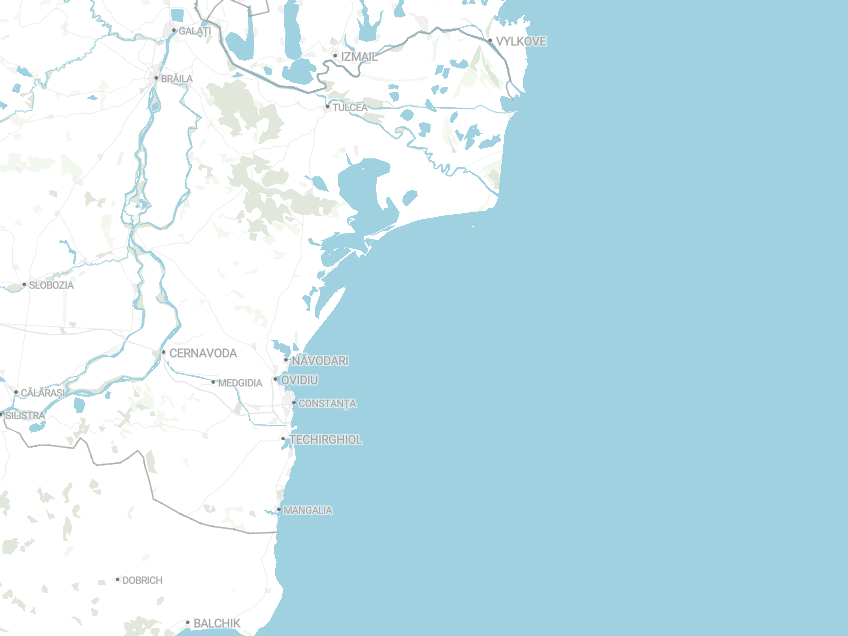Romania and Coastal Erosion: Sustainable Development Can Wait

Analytical Article by the Institute of Danube Research
Introduction
Coastal erosion along the Black Sea is one of the most acute environmental and socio-economic challenges in the wider Black Sea–Danube region. For Romania, which possesses more than 240 km of shoreline, the issue has become strategic: under threat are not only unique natural ecosystems but also major ports, tourist resorts, and densely populated areas.
Despite the initial commitment to nature-based solutions and sustainable development, the Romanian government, supported by EU funding, has largely opted for massive engineering interventions. This approach has provoked criticism from scientists, civil society, and parts of the tourism industry, raising important lessons for Ukraine and other coastal states.
1. Scale and Consequences of Erosion
- Erosion dynamics: About 800 km of Black Sea coastline (one-fifth of its total length) retreats by more than one meter each year.
- Romania’s vulnerability: 43% of the country’s shoreline is classified as “highly sensitive,” while 37% is already eroding.
- Socio-economic risks: Over 500,000 residents, critical ports (Constanța, Midia, Mangalia), and major resorts (Mamaia, Eforie, Costinești) are directly exposed. Tourism alone attracts more than 8 million visitors annually.
2. EU Investments and Shifting Approaches
- General Master Plan (2012): With international support, Romania developed a long-term strategy emphasizing nature-based solutions (compatible beach nourishment, dune restoration, coastal vegetation).
- Phase I (2012–2015): EU investment of €170 million; 60 hectares of beaches expanded through nourishment, combined with limited submerged barriers.
- Phase II (2014–2020, extended to 2021–2027): Strategy shifted dramatically; more than 30 groynes, artificial reefs, and 220 hectares of reconstructed beaches were implemented. Budget increased to €840 million.
3. Criticism and Public Debate
- Scientific community: Experts argue that “hard” interventions repeat the mistakes of the 1960s — blocking sediment flows and intensifying erosion in unprotected areas.
- Tourism sector: Surveys show over 65% of visitors to Mamaia dissatisfied with the new beach conditions (dark sand, shell debris, steep underwater slopes reducing safety for families).
- Public opinion: Many locals suspect that oversized beach extensions serve to legalize chaotic construction near the shoreline or to stimulate new real estate projects.
4. Official Government Position
Romania’s National Water Agency rejects accusations of “betraying” sustainability principles, arguing that nature-based approaches require inaccessible technologies and long-term funding. Hard engineering structures are presented as the only “guarantee of protection even without maintenance,” while EU financing rules push for tangible, quickly measurable results within program cycles.
5. Romanian Experience — Lessons for Ukraine
As Ukraine prepares for post-war reconstruction, including in Odesa region (Zatoka, Serhiivka, Chornomorsk), several lessons emerge:
1. Avoid repeating “concrete mistakes.” Hard engineering brings short-term relief but long-term risks.
2. Prioritize nature-based methods. Local sand nourishment, dune systems, and green coastal barriers provide more sustainable protection.
3. Strengthen cross-border coordination. Erosion is a transboundary issue; Ukraine must engage with Romania, Bulgaria, and the EU within the Danube Strategy (EUSDR) and Black Sea regional frameworks.
4. Balance economy and ecology. Tourism, ports, and urban development must be harmonized with long-term climate adaptation.
5. Ensure financial sustainability. Ukraine should design co-financing mechanisms to avoid overdependence on EU program cycles and “quick-fix” incentives.
6. Conclusions
Romania’s case illustrates how short-term political and financial priorities often outweigh sustainability principles. For Ukraine, this is not only a neighboring precedent but also a practical warning: in coastal management, nature-based solutions are not optional, they are essential.
Analytical Conclusion:
Romania’s experience demonstrates how a “concrete logic” can prevail over “green policies.” For Ukraine and the wider Black Sea region, it underlines the need to prioritize long-term, nature-based, and transboundary approaches to protect vulnerable coastal communities and ecosystems.
